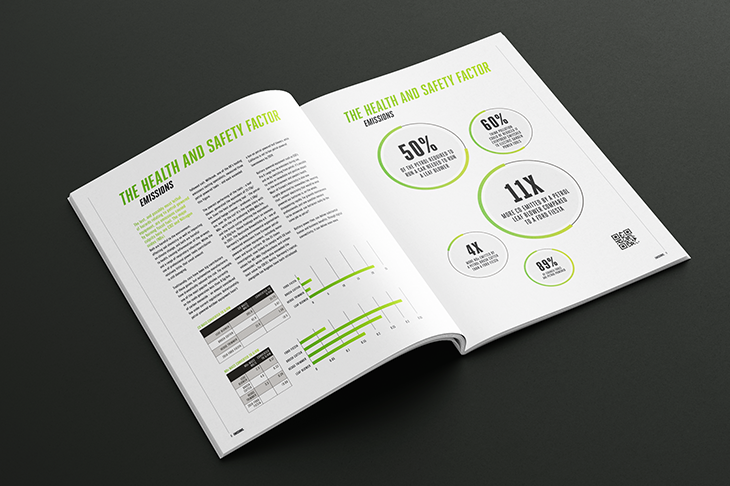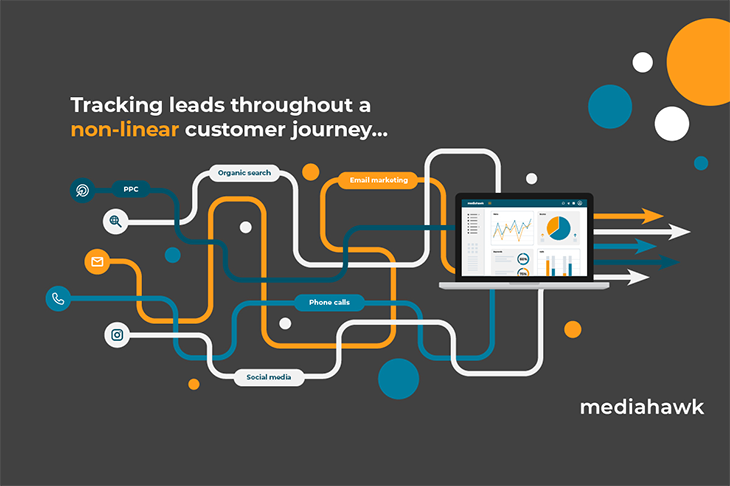- Perspective
- PR & Content
The different types of content marketing – from infographics to whitepapers.
Content marketing. Oh, where to begin? Ezrina McIntyre, PR & Content Manager, has delved into the vast and diverse toolbox that is content marketing to uncover what’s really in a B2B brands’ arsenal.

Content marketing is a strategic approach to developing and publishing relevant and valuable content. Often, B2B brands (and B2C, for that matter) can become overwhelmed when choosing which type of content is best for effective communication. To accelerate brand value, the ‘big four’ must work intrinsically as part of a multichannel campaign: the written word, imagery, video and audio.
Share your story: Written.
Whether you’re writing for online publications or your website, or perhaps sending direct mail or investing in carefully crafted spoken word pieces – the words you choose must tell a story and sell your brand promise.
Whitepapers.
To kick us off, I’ll start with the most comprehensive piece of content – the whitepaper. In a world where we’re told attention spans are short, where five-second videos are hailed as succinct, yet witty social captions are revered – there is still space for long-form, in-depth content.
This is particularly true for B2B sectors that deliver complex and technical solutions and products. It isn’t possible to communicate all you have to offer with short-form content. Instead, a whitepaper provides the perfect opportunity to discuss your chosen subject at length. It gives your customers the confidence that you’re an authority on certain industry issues that matter to them.
It’s important to note that whitepapers must be engaging, so you must avoid being too text-heavy. Present data and information, yes – but ensure that you’re able to provide opinions, reflect on how your business responds or will respond, and always bring the discussion back around to your customers to ensure they carry on reading.

Case studies.
Ah, the case study. It is one of the most invaluable pieces of content for any business. And even though I’ve put this into our ‘written’ section, the case study can take many forms depending on who your audience is and how they prefer to digest content.
The trick with case studies is to be succinct. What was the situation? What were the challenges? How did you solve them? How did this positively impact your customer? Often, case studies can become too long; the temptation to provide the ins and outs, the left and right turns, and the U-turns is tempting. But remember, you’re drafting this for future customers to demonstrate your expertise – they want to know what happened, why and how you helped. Oh, and customer testimonials will never go amiss here.
Press releases.
A press release will always be a great way to communicate something new that is happening within your business. This must be at the centre of any B2B PR campaign, as you’d expect. But be aware that often, you’ll need to draft various iterations of your release to accommodate varying customer needs and titles. Let’s take a product launch release; perhaps you need to promote the launch of a brand-new range of garden tools– the features of such equipment will benefit various customers in different ways, particularly if you’re speaking to an international audience.
Blogs.
Blogs are a fantastic asset in any B2B content marketing campaign, particularly if attributed to an expert within your business. This is a great way to promote specific services, discuss an industry issue or explore the benefits of a new product range. Moreover, new and regular content uploads across your website will put you in Google’s good books to help boost your brand’s positioning in search engines.
Captivate with imagery.
Infographics.
Infographics are captivating and exciting. We recommend an infographic if you’re dealing with complex data or something more on the ‘dry side’. With a great design, simplified definitions, charts and imagery, infographics will engage your target audience and deliver exactly what they need to know in an easily shareable format.

Social ads.
When executing a Social media marketing campaign, it’s important to have social advertisements running parallel to accelerate results. By letting your organic social content speak, you can show something different, perhaps more creatively daring, with your social ads. This is a great way to try something new, as you’re guaranteed to hit a new, broader audience and amplify your brand message.
Display (PPC).
Like social ads, display – or PPC – works best when activated in unison with an organic SEO strategy. It is a cost-effective, creative tactic that will help boost brand awareness in the early stages of your campaign. The trick here is to develop a range of creatives that capture your target audience. What you’re trying to do here is attract, entice and be present across your customer’s digital landscape.
Bring it to life: Video.
GIFs and animations add something a little more dynamic to your content. It doesn’t matter if you’re using them for social media, in your emails or as part of blog posts; GIFs and animations will ensure your content is memorable, giving your customers something different than static images. If used well and consistently, you’ll be able to generate more click-throughs, as research suggests audiences will develop more of an emotional connection with your brand when exposed to animated content.
Video podcasts.
Video podcasts have changed everything – just think of how many we watch (and listen to) daily. There is no reason B2B brands shouldn’t take a piece of this enormously popular content form.
A video podcast takes the audio experience and enhances it into a visually engaging piece that has proven to drive greater trust and authenticity. I think the obvious video podcast format is conversation-driven with a host and a guest – think The Joe Rogan Experience or Diary of a CEO with Steven Bartlett. Both are highly successful in their own right, but be careful not to try and mimic these setups. Budgets do not need to be injected into dazzling studio spaces or expensive equipment – the value of your content will come from the topic and how engaging your conversation is. This is what your B2B audience is after – honest, genuine conversations that resonate.
Dynamic storytelling.
Dynamic storytelling is the art of sharing your brand’s narrative in a – you guessed it – dynamic way. This means exploring new ways to make video work for you and your brand. This could be video testimonials, animated product introductions or stories, educational videos or even brand films. If I could be so bold as to point out a great example… our ‘Brand Anthem’ video truly encapsulates who we are, who we work for, what we do, and why – all in 60 seconds.
Make a sound: Audio.
Audio podcasts.
Now, if video podcasts may not be something you’re able to consider right now – audio podcasts are a great way to start. They’re inexpensive to produce, easy to publish and with the right topic selection (and potential guest), this is an effective way to boost your brand’s profile. A podcast is a great way to provide your customers and wider audience with something new, something more engaging that they can listen to on the move. Let’s face it: sometimes, your customers will not have time to read or watch everything you publish. But with audio podcasts, you’re granting them the option to start and stop and delve back into your podcast whenever suits them.
As an accessible and low-cost content marketing tactic, B2B podcasts demonstrate thought leadership, increase brand awareness and help build loyal communities.
Interviews.
Finally, we’ve arrived at ‘interviews’. Now, this can be with anyone. Industry leaders, specialists within your business, team members, influencers, and even leading sector journalists. When creating your interview format, follow a simple and succinct structure – this will allow you to manage the interview accordingly and ensure that listeners get the best they can out of the conversation.
Audio interviews can also be published in full and in individual parts – this will make it far easier to distribute your audio content across a wider variety of platforms and target your messaging.
So there you have it! Content marketing types in a nutshell. This is quite an extensive list, which only highlights the vast amount of options B2B brands have. If there is anything you’d like to explore further – do get in touch with me by sending a message on LinkedIn.